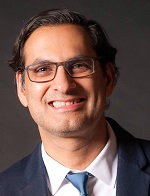
1. Please introduce yourself.
My name is Dr. Yanping Gong. I am an assistant professor in the Department of Pathology and Molecular Medicine at Queen’s.
2. Did you apply as an early or established investigator?
An early investigator.
3. Can you describe your proposed area of research, including title and how long the project is estimated to take?
The project is titled "A Multicentric Collaboration to Evaluate Quantitative Assays for SARS-CoV-2 and Determine Humoral and Cellular Immunity (CONQUER): Immunosuppressant Cohort. The project is estimated to take two years to complete.
4. What does receiving the Innovation Fund award mean for you?
The funding is critical to support this important research activity. It aims to assess the vaccine-mediated immune responses in immunocompromised patient populations to ensure adequate and appropriate access to vaccines tailored to their medical conditions and treatments.
------------------------------------------------
1. Please introduce yourself.
My name is Sulaiman Nanji and I am an Associate Professor in the Department of Surgery with an interest in translational and epidemiological research in patients with Hepato-pancreatico-biliary (HPB) malignancies.
2. Did you apply as an early or established investigator?
I applied as an established investigator with a strong team comprised of senior investigators as well as early investigators to develop this program of research.
3. Can you describe your proposed area of research, including title and how long the project is estimated to take?
The title is "Development of a Risk Prediction Tool for Mortality After Non-Hepatic Surgery in Patients with Cirrhosis." The number of people in Ontario with cirrhosis is rising because of an increase in individuals with hepatitis C and non-alcoholic fatty liver disease. Because of complications of cirrhosis related to liver failure and portal hypertension, surgical procedures in patients with cirrhosis are associated with an increased risk of complications and death compared to people with normal liver function. Currently, there are no contemporary risk prediction tools able to estimate outcomes in order to inform patients, their support system or care providers when making decisions regarding surgery. Therefore, many surgical procedures in patients with cirrhosis may be done with futility or conversely, may not be offered to patients for the fear of poor outcomes. The ability to more accurately define the proposed risk of mortality will have a large impact for patients, physicians and the allied health teams who care for this patient population. This proposal aims to describe the morbidity and mortality associated with non-liver surgery in patients with cirrhosis in Ontario from 2009-2017 and develop and validate a clinically useful prediction tool to estimate mortality. Once developed, this tool will be translated into a smart-phone application that can be used by health care providers who manage these patients. The results of this study are expected to improve the ability to have informed consent discussions with patients and families considering surgical procedures in patients with cirrhosis. The project will likely take three years to complete.
4. What does receiving the Innovation Fund award mean for you?
Receipt of this award is extremely encouraging and validates the importance of this work. This type of tool has never been developed in a contemporary era or in a Canadian population so it is innovative and has potential to make a significant clinical contribution to how we care for patients with cirrhosis.
